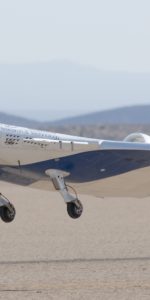
The rover Curiosity is beginning to transmit an increasingly detailed string of images from its Sky Crane Mars Descent Imager MARDI camera from the vehicle in flight and then with its front and back hazcam imagers after the descent and initial hours on the surface of Mars.
In its most stunning surface image so far, a pair of Curiosity’s front hazcams transmitted a clear image of 18,000 ft. Mt. Sharp only about 4-6 mi. distant across flat pebble strewn plane. (see image above).
Curiosity within a year will begin to climb the mountain, but first will explore the flatlands that scientists believe is part of an alluvial fan that carried water from the crater rim onto the crater’s floor on which Curiosity now sits. The crater rim is behind the rover in this view.

Initial images are also slowly being transmitted from the Malin Space Systems MARDI Mars Descent Imager that began taking ground pointing images at a rate of 4 frames/sec. as soon as the heat shield was separated from the base of the aeroshell.
In a spectacular image of that event, the nearly 15 ft. diameter Lockheed Martin heat shield was imaged falling away from the aeroshell allowing both the MARDI camera and landing radar mounted on Curiosity to see the ground.

As this set of images proceeds, the Sky Crane falls free of the aeroshell with no discernible motion in this initial single frame release, but shortly thereafter appears below on the Martian surface, a large oval shaped area of disturbed dust. This is where the plumes from the Sky Crane’s eight Aerojet Mars Landing Engines (MLEs) have begun to kick up the soil.
That scene is followed by another image (below ) where the scene has been seriously disrupted by a maelstrom of dust kicked up by the MLE’s. At the same moment there appears in the extreme right of the picture part of the lowering of the rover wheels just before touchdown.
[youtube_video]http://www.youtube.com/watch?v=UcGMDXy-Y1I[/youtube_video]
Video courtesy of JPL / Malin Space Science Systems
A Jet Propulsion Laboratory graphic (below ) depicts the best early estimation of Curiosity’s position in the landing ellipse. The rover is only slightly north and east of the center point of the ellipse, according to John Grotizinger, MSL project scientist based at Caltech.
The green diamond shows approximately where NASA’s Curiosity rover landed on Mars, a region about 1.2 mi. northeast of its target in the center of the blue ellipse. The location of the diamond is based on Earth-based navigation data taken prior to Curiosity’s entry into the Martian atmosphere, as well as data taken by the rover’s navigation instruments during descent.

Some of the early hazcam images taken on the Martian surface look alike, until a bit of time is devoted seeing what is really there. This is the case of one rear hazcam image (below) that, in addition to the wheel mechanism and pebble-like terrain, captured a cooling fin used to dissipate heat from the rover’s RTG radioisotope thermoelectric generator, the dust cover mechanism for one of the rear hazcams and at extreme top right a ridgeline that makes up the Gale Crater wall.






Another excellent article by Covault. He remains the best writer about space related issues in the business. His articles are precise and concise, unlike a number of other science/space writers who seem to want to dazzle the reader with their knowledge and verbosity.